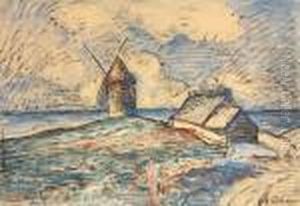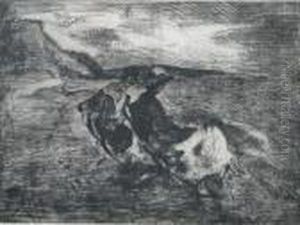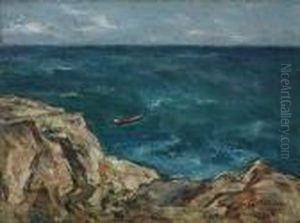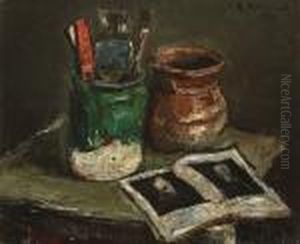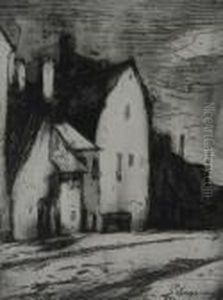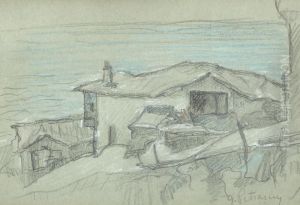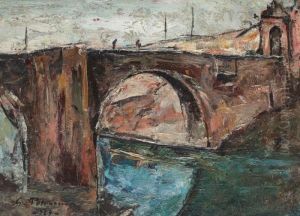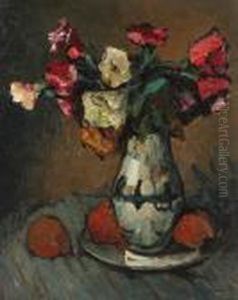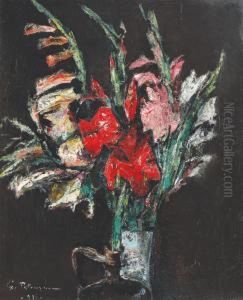Petrascu Gheorghe Paintings
Gheorghe Petrașcu was a Romanian painter, considered one of the most important of his generation in his country. Born on December 4, 1872, in Tecuci, Romania, Petrașcu demonstrated an early interest in art and began his formal education at the School of Fine Arts in Bucharest. Seeking to further his artistic training, he moved to Munich in 1894, where he studied at the Royal Academy of Fine Arts. His time in Munich was followed by a period in Paris, which was then the epicenter of the art world. In Paris, Petrașcu was significantly influenced by the Impressionists and Post-Impressionists, and his own style began to reflect elements of their approach to color and light.
Petrașcu's work, however, was not limited to any single style. He is known for his versatility, having painted landscapes, still lifes, portraits, and nudes. His landscapes of the Romanian countryside are particularly noted for their lyrical and atmospheric qualities, capturing the spirit and essence of the places he depicted.
Throughout his life, Petrașcu remained connected to Romania, returning there frequently and maintaining a strong Romanian identity in his art. He played a significant role in the Romanian art community, influencing younger artists and contributing to the development of modern Romanian art.
During his career, Petrașcu received numerous awards and honors, and his work was exhibited widely, both in Romania and abroad. He was also a member of the Romanian Academy and contributed to the cultural life of his country through his involvement in various artistic societies and organizations.
Gheorghe Petrașcu died on May 1, 1949, in Bucharest. His legacy lives on through his contributions to Romanian art, and his works are held in many collections, including the National Museum of Art of Romania. Petrașcu's impact on the cultural heritage of Romania continues to be celebrated, and his name remains synonymous with the flowering of Romanian painting in the early 20th century.



